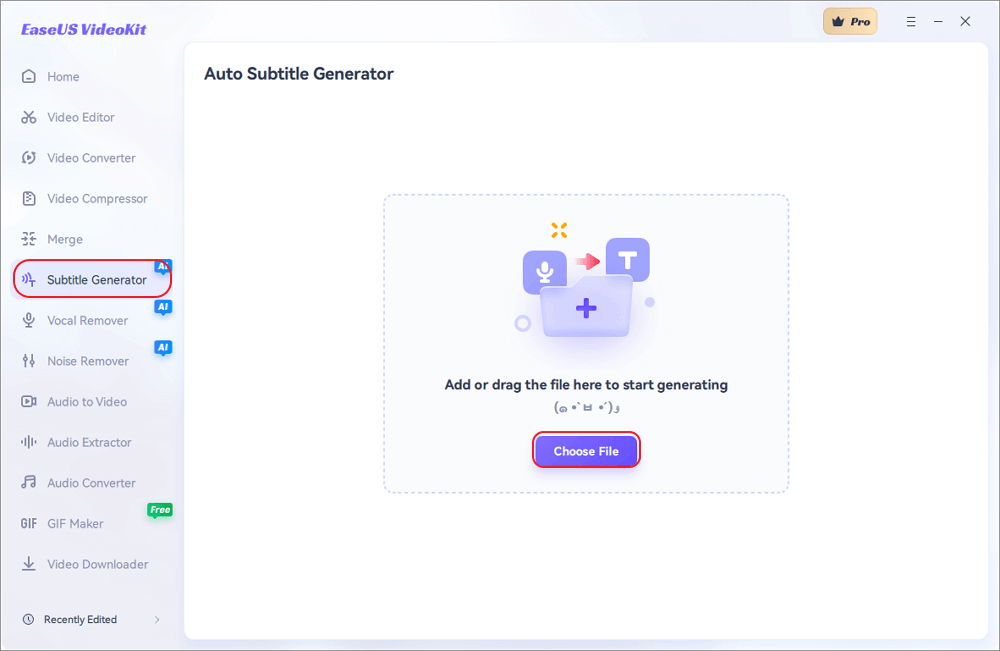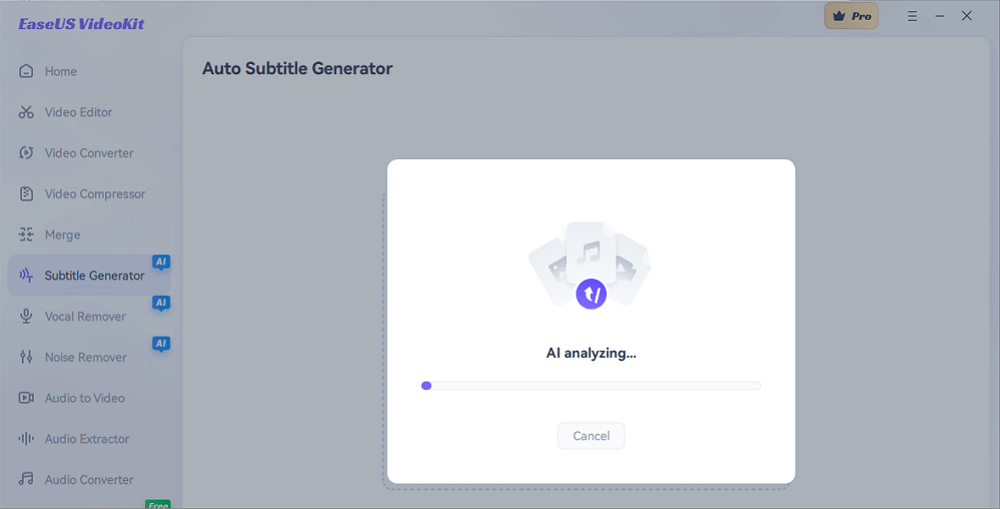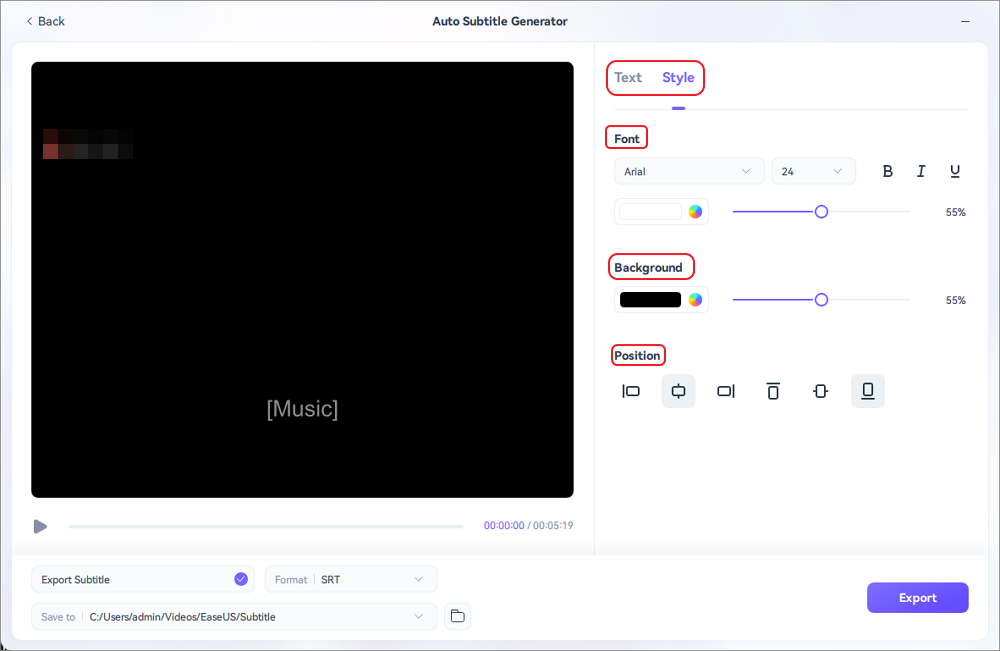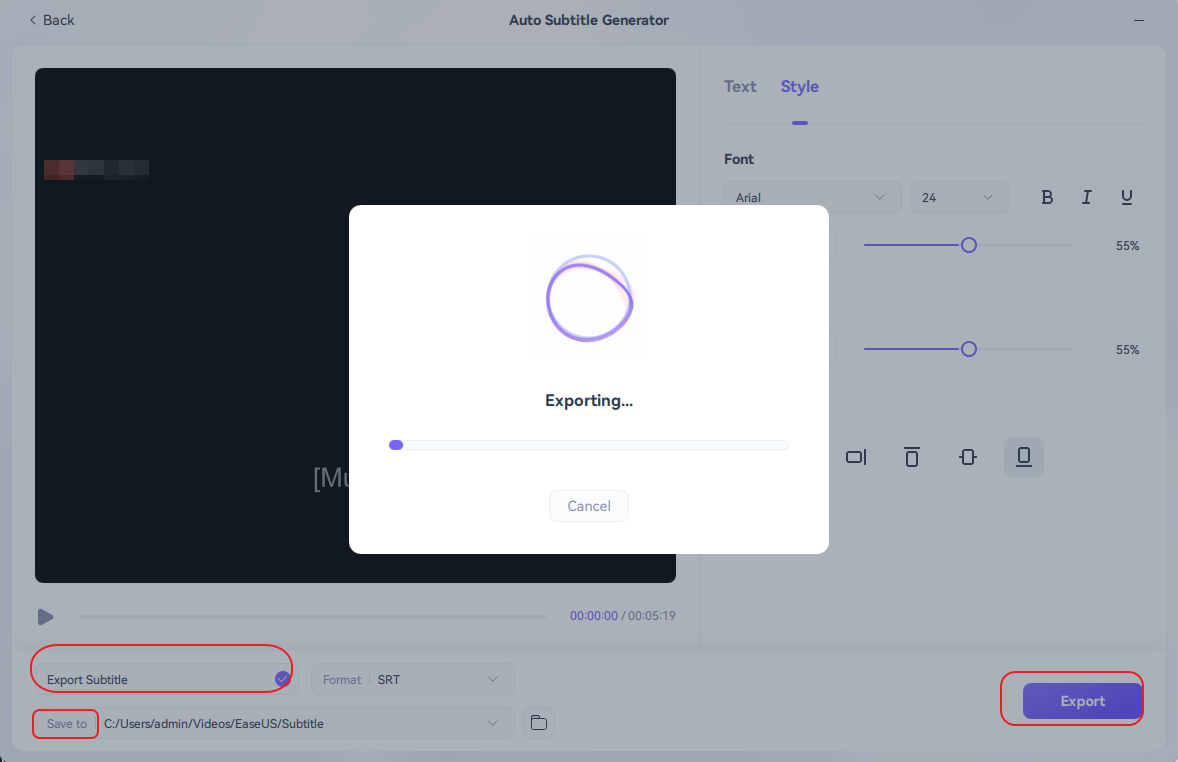-
Jane is an experienced editor for EaseUS focused on tech blog writing. Familiar with all kinds of video editing and screen recording software on the market, she specializes in composing posts about recording and editing videos. All the topics she chooses are aimed at providing more instructive information to users.…Read full bio
-
![]()
Melissa Lee
Melissa is a sophisticated editor for EaseUS in tech blog writing. She is proficient in writing articles related to screen recording, voice changing, and PDF file editing. She also wrote blogs about data recovery, disk partitioning, and data backup, etc.…Read full bio -
Jean has been working as a professional website editor for quite a long time. Her articles focus on topics of computer backup, data security tips, data recovery, and disk partitioning. Also, she writes many guides and tutorials on PC hardware & software troubleshooting. She keeps two lovely parrots and likes making vlogs of pets. With experience in video recording and video editing, she starts writing blogs on multimedia topics now.…Read full bio
-
![]()
Gorilla
Gorilla joined EaseUS in 2022. As a smartphone lover, she stays on top of Android unlocking skills and iOS troubleshooting tips. In addition, she also devotes herself to data recovery and transfer issues.…Read full bio -
![]()
Jerry
"Hi readers, I hope you can read my articles with happiness and enjoy your multimedia world!"…Read full bio -
Larissa has rich experience in writing technical articles and is now a professional editor at EaseUS. She is good at writing articles about multimedia, data recovery, disk cloning, disk partitioning, data backup, and other related knowledge. Her detailed and ultimate guides help users find effective solutions to their problems. She is fond of traveling, reading, and riding in her spare time.…Read full bio
-
![]()
Rel
Rel has always maintained a strong curiosity about the computer field and is committed to the research of the most efficient and practical computer problem solutions.…Read full bio -
Dawn Tang is a seasoned professional with a year-long record of crafting informative Backup & Recovery articles. Currently, she's channeling her expertise into the world of video editing software, embodying adaptability and a passion for mastering new digital domains.…Read full bio
-
![]()
Sasha
Sasha is a girl who enjoys researching various electronic products and is dedicated to helping readers solve a wide range of technology-related issues. On EaseUS, she excels at providing readers with concise solutions in audio and video editing.…Read full bio
Page Table of Contents
0 Views |
0 min read
In everyday video viewing, incompatible subtitle formats could impact your viewing experience. Network issues might prevent closed captions from loading, or third-party players could cause subtitle detachment or asynchrony. All these issues can be addressed through one solution: hardcoding subtitles.
In the following content, we have curated seven efficient methods for hardcoding, each accompanied by detailed tutorials. We also present a table featuring test data to facilitate your final decision.
| Methods | Effectiveness | Difficulty |
|---|---|---|
| EaseUS VideoKit | Autogenerate subtitles with an accuracy of 90% | Super easy |
| VEED | Make accurate subtitles for a video within 50MB for free | Super easy |
| Happy Scribe | Generate subtitles with an accuracy of 85% | Super easy |
| Movavi | Offer creative subtitles to video | Easy |
| VLC Media Player | Offer basic subtitle hardcoding if you have SRT files | Easy |
| HandBrake | Offer primary subtitle hardcoding service | Moderate |
| Rev | Provide paid, accurate, and professional subtitle hardcoding | Moderate |
Quick Overview of Hardcoded Subtitles
Hardcoded subtitles, in contrast to softcoded subtitles, are also known as burned-in or embedded subtitles. With hardcoded subtitles, viewers cannot turn on/off subtitles by simply toggling a CC button as it would to add subtitles to YouTube videos. Instead, the subtitles are permanently integrated into the video or media file.
The appeal of hardcoded subtitles lies in their ability to eliminate issues of subtitle asynchrony during playback and incompatibility across different devices and players. Additionally, they negate the need for any subtitle plugins.
7 Ways to Hardcode Subtitles
Given the many benefits of hardcoded subtitles, learning how to hardcode them will alleviate any lingering concerns. This section outlines seven methods.
Way 1. EaseUS VideoKit
EaseUS VideoKit is an AI video editor that combines functions such as video compression, video cropping, noise removal, and more. Of course, its subtitle generation feature is also noteworthy. It utilizes AI technology to recognize and analyze human voices, swiftly creating subtitles. As the entire process is nearly automated, you can easily get started even if you have no experience in video editing.
If you're unsatisfied with the created subtitles, it allows you to edit SRT files and customize every subtitle word, font, background, and more. Moreover, you can also download subtitle files from here for future use.
Key Features of EaseUS VideoKit:
- Support over 100 major languages
- Utilize AI for precise subtitle generation
- Allow users to customize subtitles
- Offer support for exporting subtitle files
Try the easiest way to hardcode subtitles with EaseUS VideoKit.
To use the EaseUS VideoKit Embed subtitle, please follow the below steps:
Step 1. Open EaseUS VideoKit and find the "Subtitle Generator" panel.

Step 2. Click "Choose File" or drag the YouTube video file to the interface.

Step 3. Wait for the AI analyzing.

Step 4. Click the "Text" button to change the text, or customize font, background, and position under "Style" menu.

Step 5. Click "Export Subtitle" to select exported subtitle format, "Save to" to change location, and press "Export" to export the video with subtitles.

Way 2. VEED
Veed is an online tool that supports adding hard subtitles to videos. It utilizes AI to recognize speakers' speech in videos and generates corresponding subtitle files. It can also function as a transcription generator and speech recognition software, making it particularly suitable for meetings, interviews, podcasts, and more. If you prefer not to download any software to add subtitles to Facebook videos or Instagram reels, it's a better choice.
Simply follow these easy steps to hardcode subtitles online:
Step 1. Upload Your Video
Visit www.veed.io and upload your video file.

Step 2. Select a Subtitling Option
Access the "Subtitles" tab in the editor's left toolbar. Here, you have three options for adding subtitles: you can opt to automatically add subtitles to your video, manually insert subtitles, or upload an SRT file to align with the video's dialogue.

Step 3. Review and Export Video
Thoroughly review and customize your subtitles, ensuring accurate spelling. Afterward, proceed to export and download your video on its download page, now equipped with seamlessly integrated hardcoded subtitles.

Here is a YouTube tutorial to help you.
- 2.02: Destination Output
- 3.11: Quit VLC
- 4.06: Upload My Srt File
Way 3. Happy Scrib
Similarly, you only need to upload your audio file to Happy Transcribe. It employs its innovative speech recognition technology to transcribe your recordings into text and seamlessly add subtitles to videos. It supports over 120 languages and accents, whether your video features French, Spanish, Thai, or any other language. Customization of subtitles is also available.
Step 1. Upload the video file into it.
Step 2. Click on "autogenerate subtitles" or upload the subtitle file.

Step 3. Customize the subtitles and download the video.
Way 4. Movavi
In addition to enabling easy subtitle addition, Movavi also provides a variety of editing features to enhance the professional look and sound of your videos. Moreover, apart from the regular subtitle fonts, this video subtitle generator offers engaging animated subtitle styles. Its capability to create hardcoded subtitles for formats such as AVI, MP4, MKV, FL, and more is worth mentioning.
Download this editor and follow the instructions to add permanent subtitles:
Step 1. Add your video file to the main panel.
Step 2. Click the "Titles" tab on the left to embed subtitles permanently into your video. Or you can adjust the titles and stickers on the "Timeline."

Step 3. Click "Export" and select an output format on the save video file tab.
Way 5. VLC Media Player
VLC is a free, open-source platform that allows users to hardcode subtitles into videos on Windows and Android. However, you'll also need a well-formatted SRT file to accomplish hardcoding. For beginners, the process of permanently merging subtitles into a video using the VLC media player can be a bit tricky.
If this isn't a major concern for you, or if you don't intend to venture into any additional hardcoding subtitle software, please continue reading.
Step 1. Launch VLC Media Player. Navigate to the "Media" tab and choose "Stream..." from the menu. Click the "Add" button to import your video.

Step 2. Tick "Use a subtitle file" and select "Browse" to upload the SRT file.

Step 3. Set the output location for your newly created video file. Opt for "File" from the dropdown menu and press the "Add" button.

Step 4. Tick the "Activate Transcoding" checkbox. Pick a profile from the dropdown menu and click the wrench icon.

A new window will appear. Proceed to the "Subtitles" tab, check the "Subtitles" box, and select "Overlay subtitles on the video." After saving, return to the previous window and click "Next."

Step 5. Click the "Stream" button in the window's lower right corner. Then patiently wait for the process to complete.
Way 6. HandBrake
An open-source tool as well, HandBrake allows you to hardcode ASS and SSA files and add SRT to MP4 and MKV videos. Unlike other video tools, you cannot alter subtitle colors, position, and size. In addition to hardcoded subtitles, HandBrake also enables users to add soft subtitles, closed captions, and open captions to videos.
Here is how you can proceed:
Step 1. Run the app, select "File," or drop a file or folder.

Step 2. Click on "Subtitles," then click the "Tracks" option, and select "Import Subtitle" to load your subtitles on the tool. Please make the "Burn In" box ticked. Click on the "Browse" button to specify where you want to save the output file on your device.

Step 3. Click the green "Start Encode" to hardcode subtitles.

Way 7. Rev
Rev is an interactive editor that allows users to correct spelling errors and adjust text fonts, colors, sizes, and more. It can convert subtitles into nearly any format, including .srt, .scc, .ttml, .dfxp, .cap, .mcc, and more. Users can add subtitles to MOV, MP4, AVI, VOB, and OGG files.
To use Rev, follow the below steps:
Step 1. Add the video you need to add captions.

Step 2. Rev will take you to the checkout when your video has been uploaded. Select the "Burned-In Captions" or "Burned-In Subtitles" on the checkout page.
Step 3. It will email a download link. Click it to download the finished video with burned-in subtitles.
FAQs On Hardcoding Subtitles
We have compiled users' frequently asked questions if you still have questions about this topic.
1. What do hard-coded subtitles mean?
Hard-coded subtitles refer to text permanently integrated into a video or media file. They become a permanent part of the video, ensuring they are always visible and synchronized.
2. What is the free software to hardcode subtitles?
One example of free software to hardcode subtitles is VLC Media Player. It allows you to permanently embed subtitles into videos, enhancing accessibility and ensuring subtitles remain intact regardless of the playback platform.
3. What is the difference between hardcoded and softcoded subtitles?
Hardcoded subtitles are permanently integrated into the video, while softcoded subtitles are separate files that can be turned on or off. Hardcoded subtitles ensure consistent display and don't require additional files, whereas softcoded subtitles offer more flexibility but might need external files to function.
4. Can hardcoded subtitles be removed?
Hardcoded subtitles are typically a permanent part of the video and cannot be removed without editing the video itself. Once subtitles are hardcoded, they become inseparable from the video frames, ensuring they are displayed whenever the video is played.
In Conclusion
In the above article, we have outlined seven methods for swiftly adding hardcoded subtitles to your videos, along with detailed step-by-step instructions. If you have no experience in video editing, we recommend starting with EaseUS VideoKit. Its fully automated process, combined with a ninety percent accuracy rate, is sure to be of assistance.
If you find it helpful, why not share it with more people?




